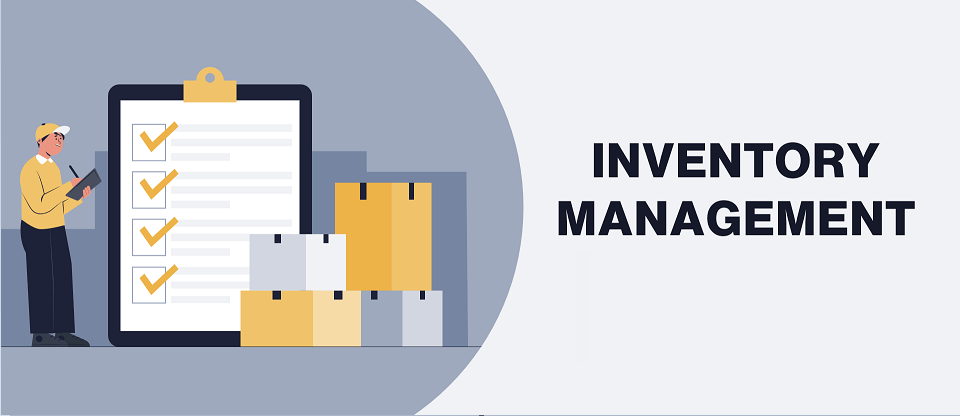
Economic Order Quantity (EOQ) is a mathematical formula to calculate the optimal order quantity to minimize total inventory costs.
Benefits of EOQ (Managerial Implications)
Economic Lot Size (ELS), also known as Economic Order Quantity (EOQ), balances the costs of inventory against the costs of setup over a range of batch quantities. In this model, the Economic Lot Size (ELS) is where Total Cost is minimum.
By maintaining EOQ, a business is able to minimize ordering and inventory holding costs, which reduces the overall inventory costs.
Storage resources are used efficiently and warehousing costs are minimized. Wastage is minimized by holding optimal inventory.
At the same time, enough inventory is available to meet customer orders and reduce the risk of stockouts.
By maintaining EOQ, a business avoids spending excessive capital on inventory; the excess capital can be used on other useful business activities.
EOQ Calculation and Assumptions
EOQ Model: Notation and Assumptions (some are unrealistic)
- D items per year: Constant demand rate
- C cost per unit
- K fixed setup cost, incurred every time the warehouse places an order
- H inventory carrying cost accrued per unit held in inventory per year that the unit is held (also known as, holding cost)
- Lead time = 0 (the time that elapses between the placement of an order and its receipt)
- Initial inventory = 0
- Planning horizon is long (infinite)
- Target service level=100%
Decision Variable: (Q,R) policy: R: reorder point; Q items per order: Order quantities are fixed, i.e., each time the warehouse places an order, it is for Q items.
EOQ Model: Formulation
TC: total annual cost; D: annual demand; C: cost per unit; Q: order quantity; K: cost of placing an order (setup cost); H: annual cost of holding/storing one unit in inventory.
When to place an order? Reorder point R=0
How many orders are placed each year? D/Q
What is the average amount of inventory per unit of time? Q/2
Total annual cost = Setup cost + Holding cost + Product cost
TC(Q) = K(D/Q) + H(Q/2) + DC
EOQ = Square Root of (2KD/H)
EOQ Model: Example
A local distributor for a national tire company expects to sell 800 tires of a certain size each month in the next year. Annual carrying cost is $16 per tire, and ordering cost is $75 per order. What is the optimal number of tires per order?
EOQ = Square Root of (2KD/H)
EOQ = Square Root of (2 x $75 x (800×12))/$16)
EOQ = 300 tires
EOQ Model with Working Days:
EOQ = Square Root of (2KD/H)
Expected Number of Orders = N = D/EOQ
Expected Time Between Orders = T = (Working Days/Year)/N
Demand per Day = d = D/(Working Days/Year)
EOQ Model with Lead Time:
R=dL (d=average daily demand)(L=positive lead time)
EOQ Model: Example
annual demand (D)=1,000 units
ordering cost (K)= $5 per order
holding cost (H)=$1.25 per unit per year
lead time (L)=5 days
cost per unit (C) = $12.50
average daily demand (d) = 1,000/365 = 2.74 units
R=dL = 2.74(5) = 13.7 units
EOQ Model with Quantity Discount
Total annual cost = Setup cost + Holding cost + Product cost
TC=DP+K(D/Q)+(h+iP)Q/2 where Q: quantity ordered; D: annual demand in units; K: ordering or setup cost per order; h: warehousing cost per unit; i: insurance/interest rate; P: price per unit
EOP(P) = Sqr Root (2KD/(h+iP)
Because unit price varies, holding cost is comprised of warehousing cost plus a percent (i) of unit price (P).
Steps to calculate EOQ with Quantity Discount:
- Step 1. For each discount, calculate EOQ
- Step 2. If EOQ for a discount doesn’t qualify, choose the smallest possible order size to get the discount
- Step 3. Compute the total cost for each EOQ or adjusted value from step 2
- Step 4. Select the EOQ that gives the lowest total cost
Adapting to Market Conditions
However, a company must regularly recalculate EOQ to adapt to changing market conditions.
It means EOQ must be revisited depending on changes in demand, supplier lead times, ordering and holding costs.
Also, if demand increases unexpectedly, the business could miss out on selling opportunities if optimal stock is maintained.
For such scenarios, a business may consider adding safety stock when calculating EOQ.
Businesses that sell multiple products may need to use inventory management software to efficiently calculate EOQ for each product item.
Examples:
Lets say for a discount store that sells toy dolls, annual demand is 6,000 dolls, the ordering cost is $50 per order and inventory carrying charge, as a percent of cost, is 30%. Cost per toy doll is $6. Calculate the optimal order quantity.
Answer:
The basic formula for EOQ = Square Root (2KD / H) where:
- K = cost of placing an order
- D=annual demand
- H=annual cost of holding one unit in Inventory
Discount Price = $6.00, K=$50, D=6,000
H=30% of cost=0.3×6=$1.8
EOQ= Square root of ((2 x 6000 x $50)/ $1.8)
EOQ = 577
BATheories.com is managed by a group of educators from Mumbai. We also manage the website StudyMumbai.com. Our panel includes experienced professionals and lecturers with a background in management. BATheories is where we talk about the various business theories and models for BA (Business Administration) students.